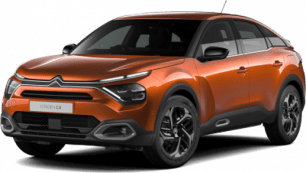A van cabin should be practical though, and despite its commitment to design, the Staria Load impresses on this front too.
There’s tough seat fabric, a rubber liner for the floor, both good for grip and protection from work equipment, and the hard door and dash claddings are a suitable treatment for an interior that's likely to be bashed about. As such, perhaps the piano-black multimedia surround is one of the least practical things in the interior, likely to get fingerprints, dirt, and perhaps even scratches all over it.
To make matters worse here, there are no dials for fan speed, temperature, or volume control, with all these functions being touch only.
Storage is much better, with a three-tiered cascading door lining offering a large bin for laptops, folios, and big bottles, a second tier which might be good for loose tools, wallets, keys, or phones, and a third one up top perhaps better used as a grab handle.
The hard dash cladding has pop-open storage trays for similar small tidbits, while the driver gets a fixed cup holder cut out from the far right-hand side.
There’s a set of two trays above the seats with flexible netting good for holding folios or perhaps even laptops, while there’s a cut-out below the media unit that houses a wireless phone charger. This area is rubberised, so it can even hold loose objects like keys if need be.
Below this, there’s a pop-out bottle holder that suits larger bottles than the fixed piece over to the right of the dash, and below this there’s a large bay with two USB connectors and a 12v outlet.
A large space lies vacant between the driver and front passenger, a space that can be filled by a fridge if chosen from the accessories list ($1299). Great for keeping your chicken sandwich out of the danger zone.
Now the important stuff. Is the Staria Load big enough for your trade or fleet? Well, the total storage area volume comes in at 4935 litres, which is not bad for the segment, but still falls significantly short of the HiAce’s massive 6200L space. So if it’s space you need, the HiAce is still king.
Payload is 1072kg, which is almost bang-on a match for the HiAce (1075kg), although towing capacity for the Staria is significantly higher, at 2500kg, compared to the HiAce’s 1500kg in automatic form. All may make a big difference specific to your trade or use-case.
For those wanting further specs, the cargo dimensions come in at 2607mm long, 1640mm wide, and 1436mm tall. There are eight tie-down points on the floor.
Our car was fitted with a cargo gate ($899) and heavy duty floor mat ($745) but it’s possible to go to town on the accessories list, which includes everything from optional window panels, security mesh, roof mountings for various attachments, and bull bars. One thing I couldn’t find on the accessories list which I would have liked is additional LED lighting for the cargo area.
I unloaded this van at night, and the amount of light inside, provided by the cabin door open lights and a single bulb near the tailgate, was notably limited. It’s not as though there’s limited space overhead for additional light fittings.
Other standard benefits include the dual-side sliding doors, although, again, some may find it’s a shame the Premium can’t be fitted with the barn door option.
While the rear hatch is very large, limiting the spaces in which it will fully open, one benefit of the Premium grade’s powered tailgate is that it can be stopped, allowing you to partially open it to access the inside, even in height-limited locations.

